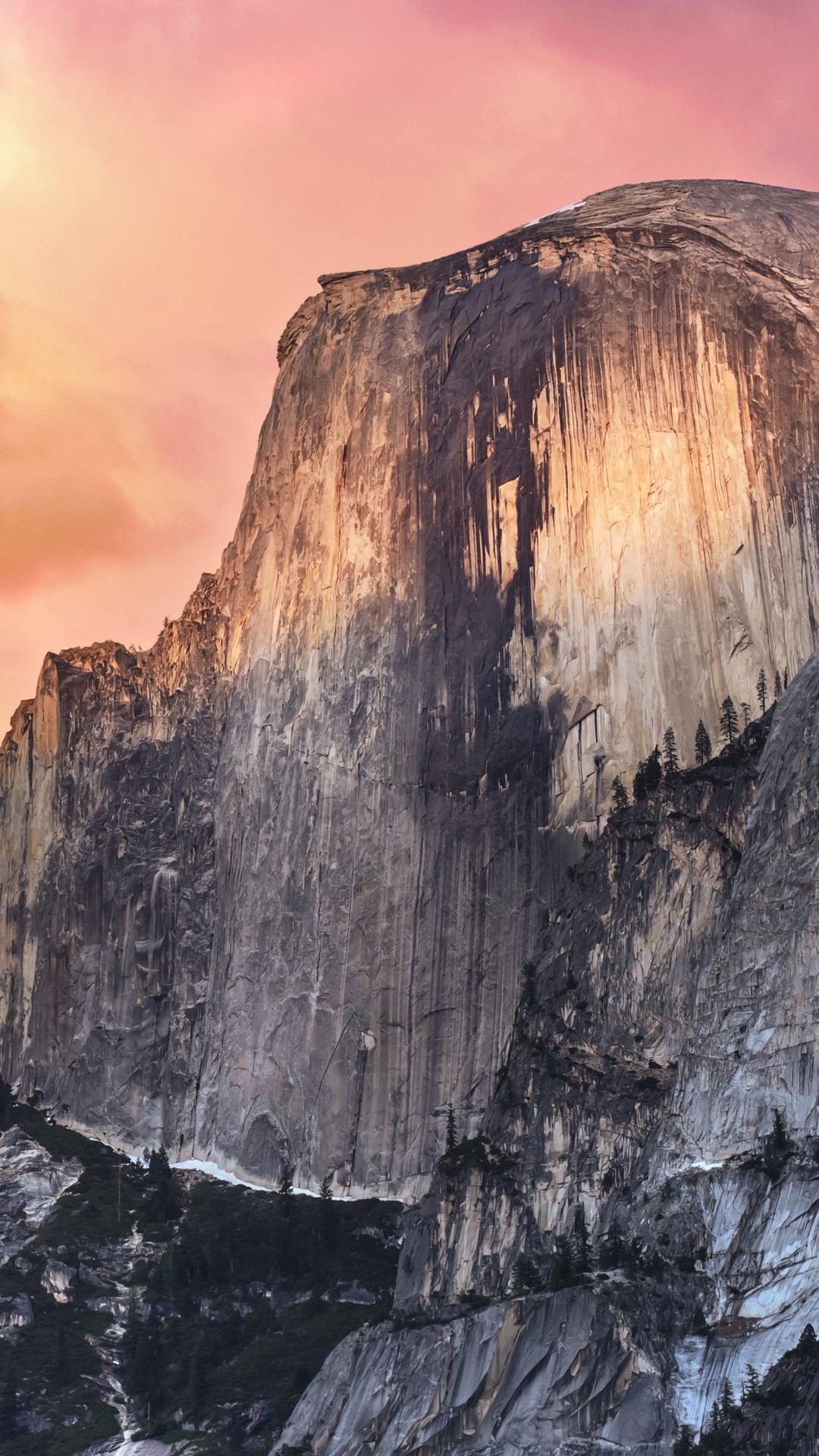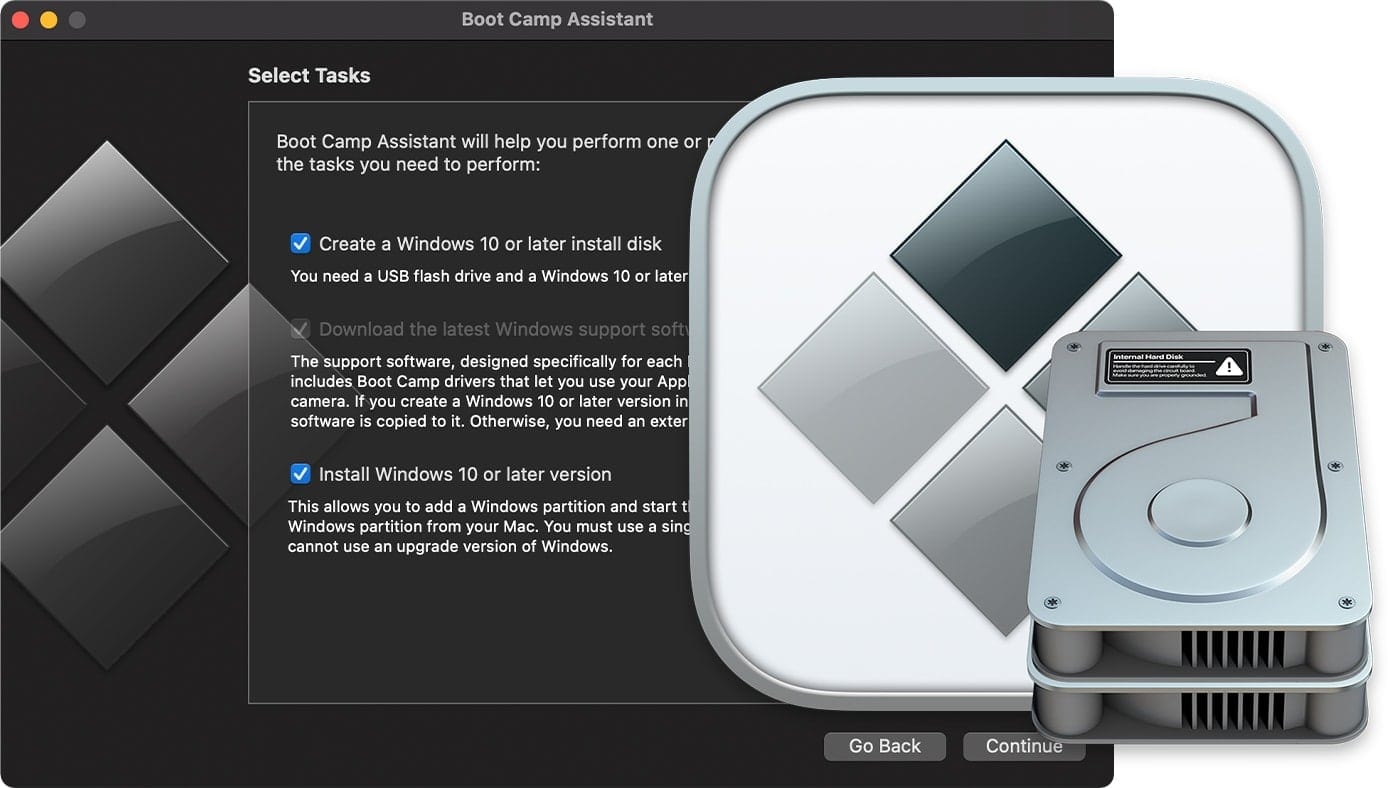Mention, that for MacOS versions prior to OS X El Capitan 10.11 you will need to create bootable Windows USB. Download Windows ISO file. Open Boot Camp Assistant (Go to Applications Utilities) Define the Windows partition size choose downloaded Windows ISO file. Format Windows partition and go through all Windows installation steps.
It can’t be done.

Update: It seems that it really can’t be done now, if you’re running a later version of macOS. I’ve had reports of Boot Camp crashing if you try to amend the Boot Camp Assistant software as outlined in Step 2 below.
El Cap seems to have nuked my Bootcamp created Windows 10 partition and it won't let me install one outright. I get the 'This is GPT partition style' error, and I'm not sure how to fix it under El Capitan. Upgrade Os X El Capitan; Bootcamp Mac El Capitan; Check compatibility. I’m stuck in Mac OS X 10.8.5 and can’t update to catalina. So i tried to update to El Capitan first to be able to get capitan after that but it’s says my os doesn’t support it When trying to download from the appstore. How To Install Windows 10 Onto Mac Osx El Capitan Using Bootcamp. Click i accept the terms in the license agreement. Click finish when the installation is complete. This is an important process, as it installs a bunch of drivers and software that will help make your windows 10 experience as good as possible on your mac. 7.2 mac os x el capitan vs windows 10 not.
Well, not if you take Apple’s Boot Camp software at face value. It suggests that only Windows 7 can be installed, and (by implication) anything newer should be left to newer Macs. But having seen the specifications of some modern Windows PCs I was fairly confident that it would run. Possibly even quite well. So I persevered.
There is a lot of advice about how to get later versions of Windows running on older Macs. Much of it is very complicated and quite possibly works if you know exactly what you are doing and the wind is behind you.
I tried some of these more complicated solutions without any success. I spent several hours over a number of days disabling system integrity protection (which doesn’t sound like a good idea), manually blessing disks (really), and creating special versions of the Windows 10 installer DVDs, which ultimately told me to press any key and then proceeded to ignore that key press and do nothing.
The wind has been very swirly recently.
Mac Os X El Capitan Bootcamp Windows 10
In the end I decided to adopt a more basic approach: I simply overrode the Boot Camp setting that said it couldn’t be done.
And it was simple – changing one number in the appropriate info.plist file.

Then I ran Boot Camp again and was told that of course my 2008 MacBook Pro was more than capable of running any version of Windows and when would I like to begin? I’m paraphrasing slightly. So I put in my Windows DVD and ran through the process of selecting a partition size and installing the operating system – all without any issues.
Then, when Windows 10 was successfully installed, I ran the Windows Boot Camp support software – and was told that it wasn’t compatible. Having heard that before, I ignored it and instead of running the main setup executable, installed the drivers via the Windows driver package that was also available with the support software (BootCamp.msi). Once that had crashed (oh) and I’d rebooted the computer I found that nearly everything was working as expected, with a crisp looking display and basic touchpad support.
There are one or two issues that I still need to look at – such as getting two finger scrolling working – but nothing that you don’t get with most new PCs (don’t ask my girlfriend about her oversensitive ASUS touchpad if you value your life). And the whole process was a lot simpler and quicker than trying to install Windows manually.
Now I have to remember why I started this process in the first place.
Steps for installing Windows 10 on your old MacBook Pro
If you follow these steps you do so at your own risk and with no guarantee that things will work out. I used a late-2008 MacBook Pro. Others of a similar vintage might well work.
Step 1
Get a copy of Windows 10. Fairly obvious but worth mentioning. You can download a copy of the Windows installer DVD in iso format from here:
You will need the 64 bit version.
To keep things simple you will need to create an actual DVD from this file, but in El Capitan that is very easy. Once the file is downloaded, insert a blank DVD (we all have those still lying around don’t we?), right-click on the iso file and select Burn to Disc.
Step 2

This is the important bit. Find the Boot Camp Assistant software in the Applications > Utilities folder on your Mac, right-click and select ’Show Package Contents’. That should open up the software package to show a Contents folder. Open that and you’ll see a list of files including one called info.plist, which is the main configuration file for the Boot Camp Assistant software.

Open that file in a text editor (I use the excellent TextWrangler) and look for this block of text:
El Capitan Windows 10 Bootcamp Full
We are interested in the MacBookPro entry. This part of this configuration file says that anything before the MacBook Pro 5,5 should only have Windows 7 installed. You can find out the version of your MacBook Pro in El Capitan by selecting ‘About This Mac’ from the Apple menu and then System Report. All you need to do is make sure that the number in the info.plist file is earlier than the MacBook Pro you are attempting to install the Windows operating system on. I changed it to MacBookPro4,5 to be on the safe side.
Save the file.
Step 3
Run the Boot Camp Assistant software, tick both boxes when prompted to do so and follow the on screen instructions.
You will need a USB flash drive to install the Apple support software for Windows (this includes all of the drivers required to get the screen, keyboard, trackpad etc working).
Step 4
When the whole process is over and Windows has installed, make sure the USB flash drive is attached.
Unfortunately the main setup.exe file on the USB flash drive won’t run properly. It will tell you that you can’t install the drivers for this Mac. Fortunately, you can ignore this and install the drivers manually by navigating to BootCamp > Drivers > Apple on the USB flash drive and running BootCamp.msi by double-clicking on it. This process may hang – it did for me when attempting to install some audio drivers.
Whether it does or not, once it has finished you should reboot. Windows should restart with most of the relevant drivers in place. Or you might end up with no sound like me. Fortunately I was able to resolve that by diving back into the BootCamp > Drivers folder and then into the RealTek folder to install the audio drivers by running RealtekSetup.exe. After another reboot the audio was fine.
So far, I haven’t come across any major problems other than the audio. I’ve installed Visual Studio and tried a few other things and it has all worked as expected. Obviously your mileage may vary and there are no guarantees, but it certainly works well enough for what I need.
It can be done.